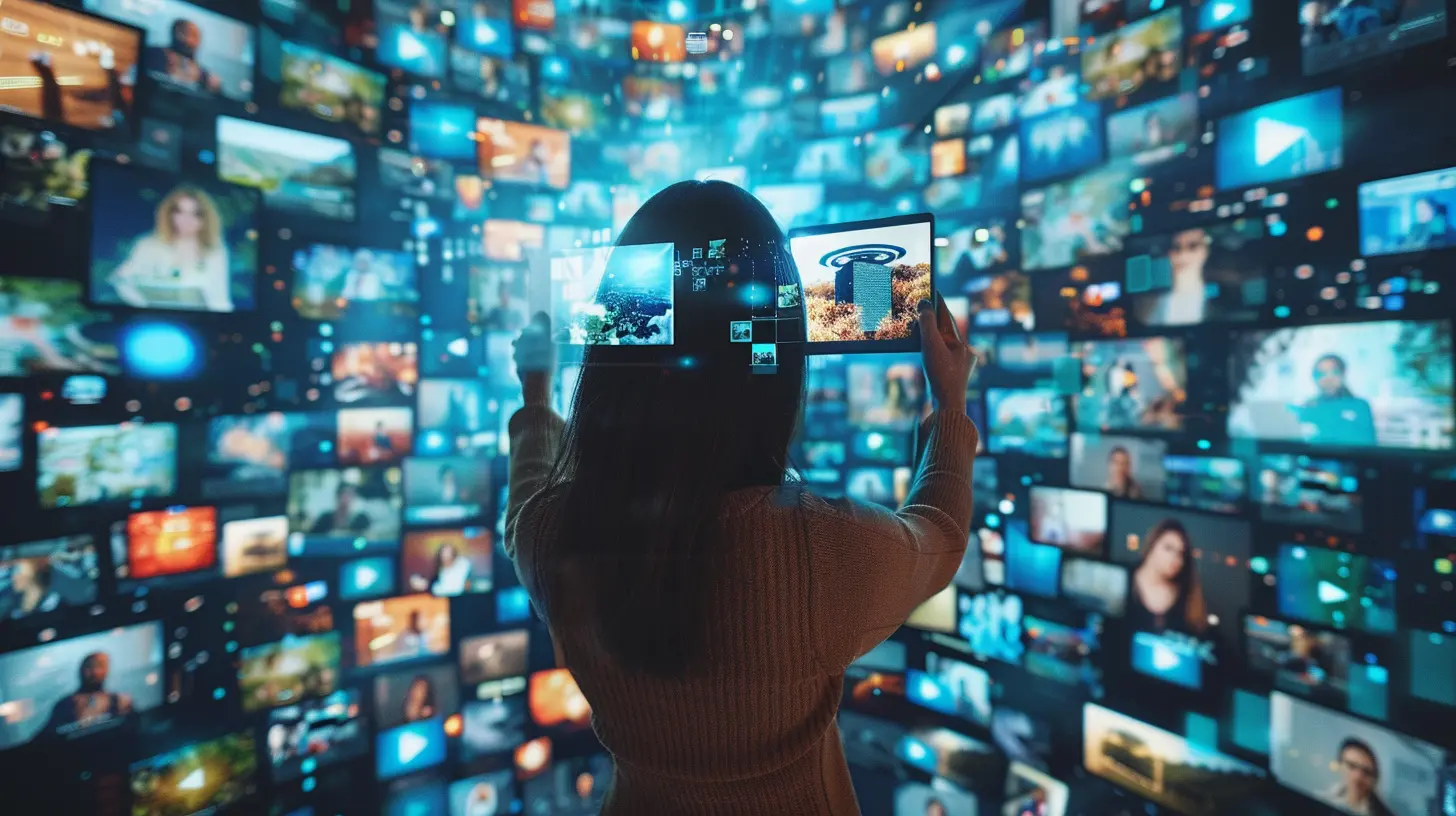The Role of Video in Modern E-Learning Platforms
2 June 2025
The way we learn has changed dramatically in recent years, thanks to technology. One of the biggest game-changers? Video. Whether you're taking an online course, watching a tutorial on YouTube, or attending a virtual lecture, videos have become an essential part of modern education. But why are videos so effective? And how are they shaping the future of e-learning?
Let's dive deep into the role of video in modern e-learning platforms and see why it's such a powerful tool for both students and educators.

Why Videos Have Taken Over Online Learning
1. Learning Through Visuals is More Effective
Humans are visual creatures. Studies show that people remember 80% of what they see and do, compared to just 10% of what they hear and 20% of what they read. That’s why video-based learning is so effective.Think about it—when you're watching a well-made educational video, you're not just listening to information. You're seeing visuals, animations, diagrams, and even real-world demonstrations, making complex concepts easier to grasp.
2. Videos Cater to Different Learning Styles
Not everyone learns the same way. Some people prefer reading, while others learn better through audio or hands-on experience.Videos combine various elements—text, visuals, and voice—to create a more inclusive learning experience. Whether you're a visual, auditory, or kinesthetic learner, there's something in a video that can help you understand a topic better.
3. Engagement Levels are Higher with Video Content
Let’s be honest—would you rather read a 20-page document or watch a 10-minute video that explains the same thing? Most people would choose the video.Why? Because videos are more engaging. They hold attention better than plain text, incorporate storytelling, and often use creative elements like graphics, animations, and background music to make learning more enjoyable.
4. Improves Retention and Recall
Many studies have shown that people retain information better when it's delivered via video. The combination of visuals, audio, and storytelling helps the brain process and store information more effectively.Ever watched a documentary and found yourself remembering random facts months later? That’s the power of video in action!

The Role of Video in Different E-Learning Formats
Videos aren't just used in one specific way in online education. They play a role in multiple formats, each with its unique advantages.1. Online Courses and Video Lectures
Most e-learning platforms, from Udemy to Coursera, use pre-recorded video lectures as a primary method of teaching. Instead of sitting in a physical classroom, students can access lectures whenever they want.The best part? Learners can pause, rewind, or rewatch videos to clarify concepts, something you can’t do in a traditional lecture.
2. Live Video Classes and Webinars
Live video classes bring the classroom experience into the digital world. Platforms like Zoom, Microsoft Teams, and Google Meet allow real-time interaction between students and teachers.This approach combines the convenience of online learning with the engagement of face-to-face teaching, providing opportunities to ask questions, participate in discussions, and even collaborate with peers.
3. Animated Educational Videos
Not all educational videos involve a person talking on screen. Many e-learning platforms use animations to teach complex subjects.For example, platforms like Khan Academy use whiteboard animations to explain math and science concepts in a simple, visually engaging way. These videos make abstract concepts easier to understand and remember.
4. Microlearning Videos
Microlearning involves short, focused videos that cover one specific topic at a time—kind of like bite-sized learning. These are becoming increasingly popular because they fit into our busy schedules.Instead of committing to an hour-long lecture, you can watch a 3-5 minute video and still walk away with valuable knowledge.
5. Virtual Reality (VR) and Augmented Reality (AR) Videos
The future of video-based learning is getting even more interactive with technologies like VR and AR. Imagine learning about ancient Egypt not just by watching a video but by virtually exploring the pyramids.Platforms are already integrating VR/AR into medical training, engineering courses, and even soft skills development, making learning more immersive and hands-on.

Advantages of Using Video in E-Learning
1. Increases Accessibility
One of the biggest benefits of video-based learning is that it makes education more accessible. Students from anywhere in the world can access high-quality courses without the need to travel or relocate.Additionally, features like subtitles, playback speed control, and language translation make learning more inclusive for people with disabilities and non-native English speakers.
2. Saves Time and Costs
Traditional education requires expenses like textbooks, rent, and travel. But with video-based learning, students and institutions save money on these costs.For educators, creating a one-time video lecture can serve thousands of students, eliminating the need to repeat the same lesson over and over.
3. Encourages Self-Paced Learning
Not everyone learns at the same speed. Some students grasp concepts quickly, while others need more time. Video-based learning allows learners to set their own pace, reducing frustration and increasing comprehension.4. Provides Better Assessment and Feedback
Thanks to video technology, educators can track student progress more efficiently. Many platforms allow students to submit video assignments or participate in recorded discussions, adding a personal touch to online learning.Additionally, AI-driven video analytics can track how long students watch a video, where they pause, and when they drop off—helping educators refine their content for better engagement.

Challenges and Limitations of Video-Based Learning
Despite its many benefits, video-based learning isn't perfect. Here are some challenges that need to be addressed:1. Requires a Stable Internet Connection
Not everyone has access to high-speed internet. Streaming videos, especially in HD or 4K, can be difficult in areas with poor connectivity.A solution could be allowing students to download videos for offline viewing, a feature that some platforms like YouTube and Netflix already offer.
2. Lack of Personal Interaction
While video lectures and pre-recorded lessons are convenient, they don’t fully replace the human connection found in traditional classrooms.Educators need to balance video content with interactive activities, discussion forums, and group projects to keep students engaged.
3. Production Quality Matters
Not all educational videos are created equal. Poor-quality videos—bad audio, shaky visuals, or monotone delivery—can make learning frustrating rather than enjoyable.Creating high-quality, engaging videos requires investment in good equipment, editing software, and instructional design skills.
The Future of Video in E-Learning
As technology advances, the role of video in e-learning will only grow. Here are some exciting trends shaping the future:- More AI-powered Video Content: AI can create personalized video lessons based on a student’s progress and learning style.
- Wider Adoption of Interactive Video: Instead of passive watching, students will engage with videos by clicking, answering questions, and making choices within the video itself.
- Better VR & AR Integration: Virtual reality and augmented reality experiences will make video-based learning even more immersive and realistic.
With these advancements, video will continue to be at the center of modern e-learning, making education more dynamic, engaging, and accessible worldwide.
Final Thoughts
Video is no longer just an extra feature in e-learning—it's a fundamental piece of the digital education puzzle. From enhancing engagement to improving retention, video-based learning is transforming the way we acquire knowledge.As technology evolves, we can expect even more innovative uses of video in education, making learning more interactive, engaging, and accessible for everyone.
So, whether you're an educator or a student, it's time to embrace video as a key tool in the future of learning!
all images in this post were generated using AI tools
Category:
E LearningAuthor:

Anita Harmon
Discussion
rate this article
3 comments
Nicholas Brown
Great insights! Video truly transforms learning, making it engaging and accessible for everyone. Thanks for sharing!
June 14, 2025 at 4:11 AM

Anita Harmon
Thank you for your kind words! I'm glad you found the insights valuable. Video is indeed a powerful tool in enhancing the learning experience.
Silas Miller
Video enhances engagement and understanding, making e-learning more interactive and effective.
June 5, 2025 at 12:58 PM

Anita Harmon
Thank you! I completely agree—video truly transforms e-learning by boosting engagement and deepening understanding.
Aiden Romero
Videos make learning fun and lively!
June 4, 2025 at 5:01 AM

Anita Harmon
Absolutely! Videos enhance engagement and help reinforce concepts in an enjoyable way.



